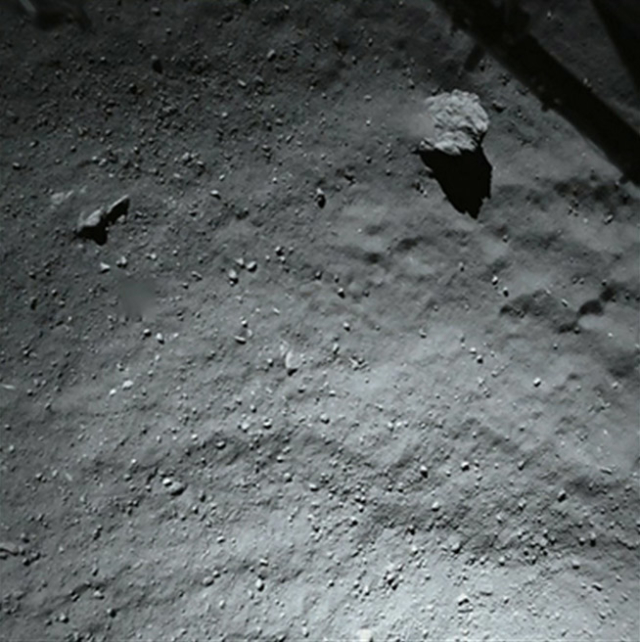A European probe has begun drilling into a comet to collect scientific data, but mission controllers said Friday that battery issues may make it impossible — at least for now — to access that information.
The Philae lander on Wednesday became the first spacecraft to touch down on a comet and has since sent its first images from the surface of the body, known as 67P/Churyumov-Gerasimenko.
But two harpoons that should have anchored the washing machine-sized Philae to the surface did not properly deploy when it hit the comet.
That caused the lander to bounce off the comet and drift through the void for two hours before touching down again. After a second, smaller bounce, scientists believe it came to rest in a shallow crater on the comet’s 2½-mile (4-kilometer) -wide body, or nucleus.
European Space Agency mission control still has not been able to locate the probe, but it’s believed to be next to a cliff that is blocking sunlight from its solar panels.
That means the probe has been operating on battery power, which is expected to soon run out.
Philippe Gaudon, an ESA project manager, said that by using that power, Philae was able to successfully deploy its drill and bore 25 centimeters (about 10 inches) into the comet’s surface to start collecting samples.
“So the mechanism has worked, but unfortunately we have lost the link and we have no more data,” he told reporters in an online briefing.
Scientists hope to be able to study the material beneath the surface of the comet, which is streaking through space at 41,000 mph (66,000 kph) some 311 million miles (500 million kilometers) from Earth. Since the material has remained almost unchanged for 4.5 billion years, it is something of a cosmic time capsule.
But Stephan Ulamec, head of operations for Philae, said right now it was unknown whether battery power would be sufficient to link back up with the probe.
“Maybe the battery will be empty before we get contact again,” he said.
Meantime, he said the probe is receiving “very limited power” from its solar panels and project engineers are trying to determine how they might move the panels so that they receive more sunlight.
Communication with the lander is slow, with signals taking more than 28 minutes to travel between Earth and Philae’s mother ship, the Rosetta orbiter flying above the comet.
This report is compiled with information from The Associated Press
 CGTN America
CGTN America This image released by the European Space Agency ESA Thursday Nov. 13, 2014 was taken by Philae’s down-looking descent ROLIS imager when it was about 40 meters (131 feet) above the surface of Comet 67P/Churyumov-Gerasimenko Wednesday. It shows that the surface of the comet is covered by dust and debris ranging from mm to metre sizes The large block in the top right corner is 5 m in size. In the same corner the structure of the Philae landing gear is visible. (AP Photo/Esa,Rosetta,Philae)
This image released by the European Space Agency ESA Thursday Nov. 13, 2014 was taken by Philae’s down-looking descent ROLIS imager when it was about 40 meters (131 feet) above the surface of Comet 67P/Churyumov-Gerasimenko Wednesday. It shows that the surface of the comet is covered by dust and debris ranging from mm to metre sizes The large block in the top right corner is 5 m in size. In the same corner the structure of the Philae landing gear is visible. (AP Photo/Esa,Rosetta,Philae)
